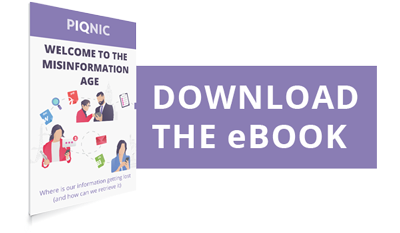It has long been reported that remote workers outperform office workers. The single biggest reason for it was distractions.
There are just too many in the office. Scheduled meetings, impromptu meetings, repetitive meetings, noisy environments, irritating co-workers, visitors, and travel time all contribute to the problem.
But when we remove ourselves from the office and start working remotely from our quiet havens, aren’t we replacing office distractions with their digital equivalents? The evidence says we are.
-Apr-04-2022-09-23-09-43-PM.png?width=2000&name=Untitled%20design%20(2)-Apr-04-2022-09-23-09-43-PM.png)
When working remotely, there is obviously a need to connect with the people we work with. We need to keep in touch to share updates, create and manage documents and files, share ideas, ask questions, delegate work and keep up with the play.
Are you using a dozen apps to communicate with the team?
Most people do this by using a multitude of single-purpose apps, without giving it much thought. Try this exercise yourself: count the number of methods you use to communicate and work with teams inside and outside your organisation.
One client did and their answer was 15. This included: email, 3 messaging apps, 2 video apps (that have chat as well), phone, 2 file-sharing apps, 3 cloud storage apps and 3 social media apps.
These apps are designed to be attention-seeking and they are really good at it. They can definitely hold their own with those irritating office workers, but they’re harder to escape from because they literally follow you everywhere.
Multiple, single-purpose apps on our devices produce an incredible number of notifications as they all compete for our attention. It’s not surprising, given they all have social media in their DNA. This isn’t necessarily a bad thing. After all, they did teach the business world a thing or two about software design, mass user adoption and rapid scaling.
But as Cal Newport, associate professor of computer science at Georgetown University says, “There is nothing new about the existence of an attention economy that monetizes our eyeballs.” These attention-seeking apps are designed to distract and this has become a major problem for businesses, especially as they try to adapt to new ways of working.
Welcome to digital chaos
Digital chaos inhibits knowledge and information management because the work is scattered across multiple channels. Managers and teams still struggle to see what’s really going on, so they send messages or even worse, schedule a meeting. Our attention is already spread dangerously thin.
What’s even more concerning is preparing the next generation for the workforce. They’re already suffering from a rapid decline in their ability to concentrate. So if information workers are already wasting around 4.5 hours per week looking for information, how much time is being lost checking all those notifications and digital interruptions?
We spent several years deep-diving into this problem. While discipline plays an important factor in being able to remain focused, we can’t avoid diverting our attention to app notifications because we need to receive the information that guides our work.
It’s all about balance. We knew if we could solve this problem in our own company and build highly connected and productive teams, then surely we could do it for our customers and their customers.
What's the solution to end this 'digital chaos'?
The answer was simple but the solution proved elusive. It took a lot of trial and error, quite simply because what we were trying to build hadn’t been done before. We wanted to get information, people and work into a single smart platform that would allow the user to control what they get notified about, and by whom.
If this wasn’t complex enough, we also decided we just had to recognize the importance of information during new work patterns. Documents, files, decisions, messaging, communications, project updates, deadlines, etc. Talk to any knowledge professional and they will say you can’t just attach these to messages or bury them in cloud apps.
Well, the end result is PIQNIC. A super platform that smart companies seem to really like.
Find more about a super-platform that solves all of these problems and simplifies the flow of day to day business in our latest eBook.
Grab it now, it's free!


What's your experience of working in this area? Let us know in the comments below: